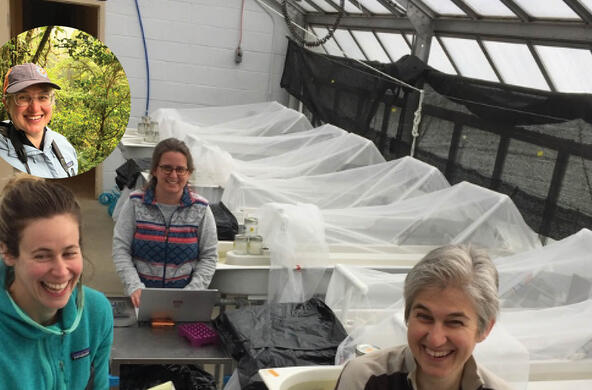Pharmaceutical pollution is present in rivers and streams throughout the world; the problem is on the rise as pharmaceutical use escalates.
Causes of pharmaceutical pollution to freshwaters include inadequate or aging wastewater infrastructure, sewage overflows, runoff from livestock operations, and effluent from drug manufacturing.
Even when wastewater makes it to sewage treatment facilities, most aren't equipped to remove most synthetic chemicals. As a result, aquatic life in streams and rivers is exposed to a cocktail of active compounds, from stimulants and antibiotics to analgesics and antihistamines.
“Society's dependence on pharmaceuticals is not likely to wane. Nor is its need for clean, fresh water. Innovations in the way we manage wastewater are crucial.” – Emma Rosi
The problem
- Drugs are not fully broken down in our bodies; we excrete active pharmaceutical compounds.
- Globally, 80% of the world’s wastewater is discharged directly into waterways.
- Even when sewage arrives at wastewater treatment facilities, most are not designed to filter out pharmaceutical compounds.
- Aquatic life is exposed to a persistent cocktail of synthetic chemicals, which alter behavior and health. Stream insects accumulate pharmaceutical compounds, passing drug pollution up the food web and even to animals on land.
We are exploring...
- The presence of pharmaceutical compounds in freshwaters across a continuum of landscapes, from urban to rural.
- How drug exposure impacts the stream and river animals that form the base of the aquatic food web.
- The movement of drug pollution up the aquatic food web and onto land
Our discoveries
With collaborators at Monash University, our research traced pharmaceutical pollution in freshwaters up the aquatic food web and to animals on land. Land transfer occurs when filter feeding aquatic insects emerge as flying adults, moving drug pollution to animals such as spiders, birds, and bats that forage near streams.
Stream sampling, done along a continuum of urban to rural sites in Australia, found up to 69 different pharmaceutical compounds in aquatic insects and up to 66 in riparian spiders. Contamination was higher in the tissues of aquatic insects and spiders collected at developed sites downstream from wastewater treatment plants.
"Platypus eat aquatic insects. If we scale up our findings, a platypus living in a creek receiving treated wastewater effluent could receive the equivalent of half of a recommended human dose of antidepressants every day. This intake is likely to have biological effects." – Emma Rosi
Cary-led work on drug and personal care product pollution in streams in New York, Maryland, and Indiana found that antihistamine exposure disrupts the ecology of biofilm communities. Biofilms are a vital part of the aquatic food web. They contribute to water quality by recycling nutrients and organic matter, and provide forage for insects and fish.
Research done in our Artificial Stream Facility tested what happens to aquatic life when exposed to amphetamine pollution at a concentration similar to samples taken from Baltimore, Maryland’s Gwynns Falls watershed. They found that growth of biofilms was significantly suppressed, the composition of bacterial and diatom communities changed, and aquatic insects emerged earlier.



